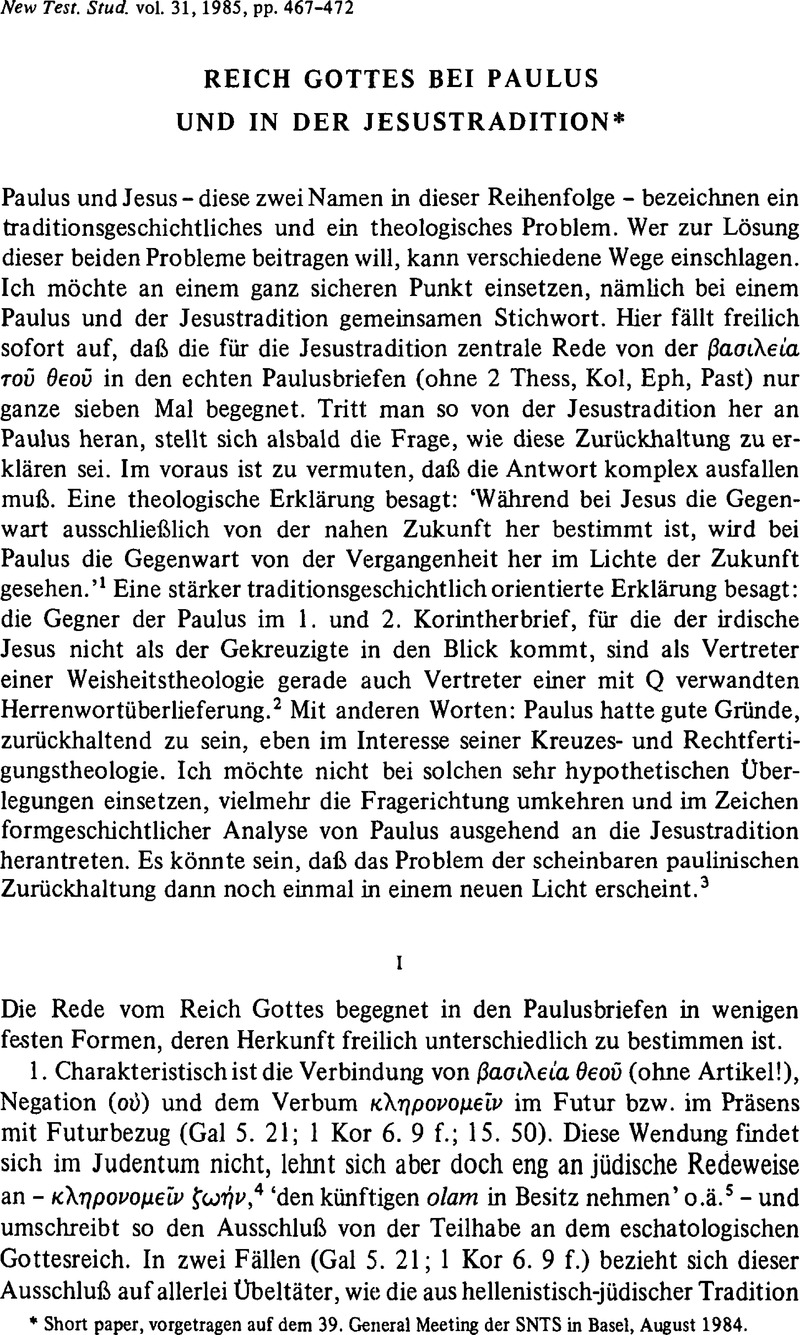Published online by Cambridge University Press: 05 February 2009

[1] Jüngel, E., Paulus und Jesus (1962) 272.Google Scholar
[2] Kuhn, H.-W., ZThK 67 (1970) 316.Google Scholar
[3] Es geht im Folgenden also nur urn einen Specialaspekt des im Titelgenannten Themas.
[4] Ps Sal 14. 10.
[5] Stiack-Billerbeck, 1, 829.Google Scholar
[6] Offen bleiben muß, ob solche Belehrung dem Taufakt unmittelbar vorausgeht oder bereits Bestandteil eines längeren Unterrichtes für Taufbewerber ist.
[7] Für den Lehisatz-Charakter spricht der Präsens-Stil.
[8] Gal, 1.16Google Scholar; ThWNT 7, 115.Google Scholar
[9] Vgl. Weiß, J., Der erste Korinther brief, 9. Aufl. (1910/1970) 122.Google Scholar
[10] Wilckens, Gegen U., Der Brief an die Römer, 3. Teilband (1982) 93.Google Scholar
[11] Vgl. Stowers, S. K., The Diatribe and Paul's Letter to the Romans (1981).Google Scholar
[12] Käsemann, Gegen E., An die Römer, 3. Aufl. (1984) 364.Google Scholar
[13] Lietzmann, Gegen H., An die Römer, 3. Aufl. (1928) 117.Google Scholar
[14] Vgl. auch die Frage des reichen Jünglings Mk 10. 17.
[15] Vgl. ‘in den zukünftigen olam kommen’ o.ä., Strack-Billerbeck, 1, 252 f.Google Scholar